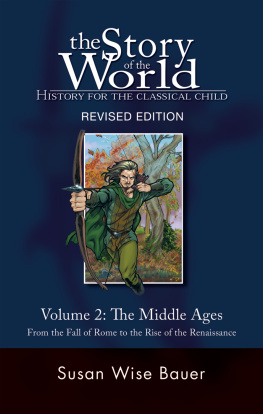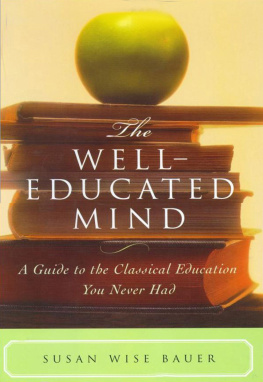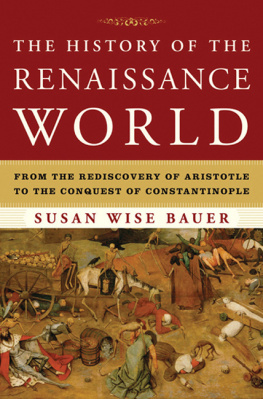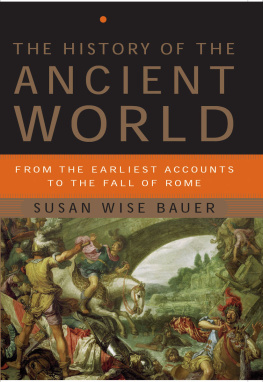
Study and Teaching Guide
FOR
THE HISTORY OF THE RENAISSANCE WORLD
By Julia Kaziewicz
A curriculum guide to accompany
Susan Wise Bauers
The History of the Renaissance World:
From the Rediscovery of Aristotle to the Conquest of Constantinople

Charles City, VA
2016 Well-Trained Mind Press. All rights reserved.
This study and teaching guide is designed to be used in conjunction with Susan Wise Bauers The History of the Renaissance World, ISBN 978-0-393-05976-2
ISBN 978-1-945-84101-9 (e-book)
Photocopying and Distribution Policy
Families: you may make as many photocopies of these pages as you need for use within your own family only.
Schools and Co-ops MAY NOT PHOTOCOPY any portion of this book, without a written license from Well-Trained Mind Press. Address requests for permissions to: support@welltrainedmind.com
www.welltrainedmind.com
1.877.322.3445
How To Use This Study Guide
This Study Guide for The History of the Renaissance World: From the Rediscovery of Aristotle to the Conquest of Constantinople is designed to be used by tutors, parents, or teachers working with both individual students and groups.
For each chapter of The History of the Renaissance World, three sets of exercises are given. Some chapters also include a fourth setmap work.
I. Who, What, Where
This section is designed to check the students grasp of basic information presented in the chapter: prominent characters, important places, and foundational ideas. The student should explain the significance of each person, place or idea in one or two complete sentences.
II. Comprehension
This section requires the student to express, in his own words, the central concepts in each chapter. The student may use two to three complete sentences to answer each question.
III. Critical Thinking
This section requires the student to produce a brief written reflection on the ideas presented in the chapter. Some preliminary exercises are also provided.
IV. Map Work [maps found on pages 827 & following]
This section uses a traditional method to improve the students geography. In his Complete Course in Geography (1875), the geographer William Swinton observed:
That form is easiest remembered which the hand is taught to trace. The exercise of the mind, needed to teach the hand to trace a form, impresses that form upon the mind. As the study of maps is a study of form, the manner of studying them should be by map-drawing.
Section IV asks the student to go through a carefully structured set of steps with maps (provided on perforated pages in the back of this book): tracing repeatedly, then copying while looking at the original, and finally, where appropriate, reproducing from memory. He will be asked to use a black pencil (one that does not erase easily) as well as a regular pencil with an eraser, as well as colored pencils of various kinds. Large amounts of tracing paper are needed!
On Research and Citations
Many of the critical thinking questions in The History of the Renaissance World: Study & Teaching Guide require research. The student may be prompted to use a specific citation style in the question, or he may be given a choice. The most common citation styles for writing in the humanities are MLA (Modern Language Association), The Chicago Manual of Style, and APA (American Psychosocial Association). The most up-to-date versions of these style guides can be purchased through each associations website:
MLA (Modern Language Association) https://www.mla.org/Publications/Bookstore/Nonseries/MLA-Handbook-Eighth-Edition
The Chicago Manual of Style, and APA (American Psychosocial Association)
http://www.chicagomanualofstyle.org/home.html
APA (American Psychosocial Association)
http://www.apastyle.org/manual/
The most recent version of each style guide should be used, as citation guidelines and rules are constantly changing, especially when it comes to online and digital sources.
You may also consider purchasing a style and citation reference book, like Diana Hackers A Writers Reference (Bedford/St. Martins), which includes guidelines for all three style guides listed above. Again, make sure to acquire the most recent edition. Also, Purdue Universitys Online Writing Lab (OWL) is an excellent, free, web-based resource: https://owl.english.purdue.edu/owl/
Students should be aware that all sources are not made equal. Here is a quick checklist that can be used to test the reliability of a source.
Credibility check:
Is the source credible?
Who is the author/publisher/source/sponsor?
Can you find the author or publishers credentials?
What does the web address end in? Sites that end in .edu and .gov are generally credible, but beware of student and employee blog posts.
Have you heard of the author/website/publishing house before? If not, can you find information about it easily?
Is the information in the text supported by evidence? If you answered no, the source you are working with is most likely not reliable.
Has the information been reviewed? If you are looking at a blog post, is it part of a reviewed publication (like a national newspaper or cable network)? If you answered no, the source you are working with is most likely not reliable.
Are there any spelling or grammar mistakes? Are there typos in the writing? If you answered yes, the source you are working with is most likely not reliable.
Application check:
Is this source appropriate for the topic you are writing about? Is it relevant to your topic?
Is the text written for the appropriate audience (not too basic or too advanced for your work)?
Is the text written to persuade or convince someone of a point? If so, is the text too biased to use as a source in your research? Can you pull objective information from it? If you answered no, the source you are working with is most likely not reliable.
Is the source a stated piece of opinion or propaganda? If you answered yes, the source you are working with is most likely not reliable.
Are personal biases made clear? Do these biases affect the objective transmission of information? If you answered yes, the source you are working with is most likely not reliable.
Is the source trying to sell you something? If you answered yes, the source you are working with is most likely not reliable.
Is this the only source youve found? Is limiting your research detrimental to your final writing product?
Timeliness check:
When was the information posted or published?
Has the information been updated or revised recently?
Is the information outdated? Has the information been proven wrong or inaccurate? If you answered yes, the source you are working with is most likely not reliable.
***Please note that the checklist above is a guideline for considering the reliability of a source, not a hard and fast list of rules. If the student is working on a piece of writing about public relations, for example, and is using an advertisement (trying to sell the reader something) in her work, the article would be a good source because it is necessary for the students essay, even if it does not pass the test above.
How To Use This Study Guide
On Research and Citations
Many of the critical thinking questions in The History of the Renaissance World: Study & Teaching Guide
Next page
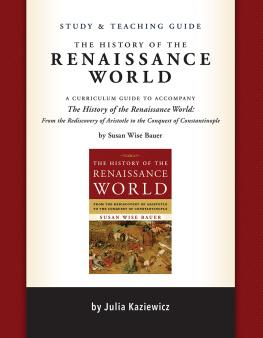
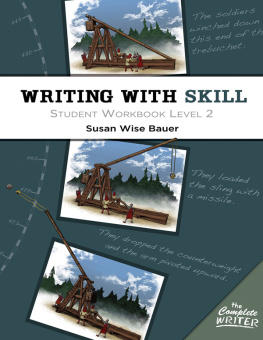
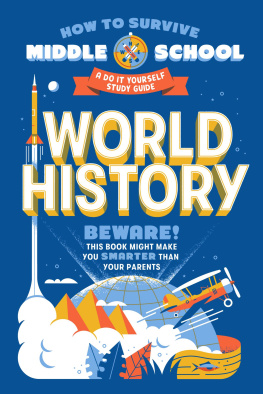


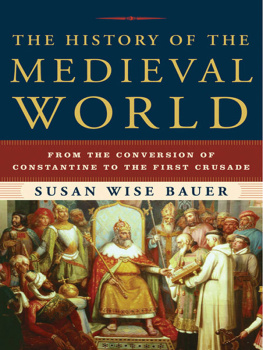
![Rountree Elizabeth - The story of the world: [history for the classical child]. Volume 2, The Middle Ages, [from the fall of Rome to the rise of the Renaissance]: test book and answer key](/uploads/posts/book/232759/thumbs/rountree-elizabeth-the-story-of-the-world.jpg)
